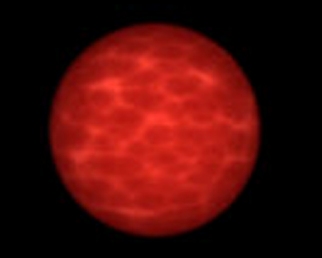|

In Star Trek, The Enterprise NX-01 wanted to investigate
a brown star in 2152 when the ship was infested by a symbiotic lifeform
and the investigation was interrupted. (ENT: "Vox Sola") According to
Data in 2366, the abundance of dysprosium in a brown dwarf star is
different than regular stars, when factored with terbium, holmium,
erbium, and europium. (TNG: "Manhunt")
In actual astrophysics, a brown dwarf is the dimmest and
least massive kind of star. A brown dwarf, which is not really brown
but a very dull red, may be defined in one of two principal ways: by
its mass or its origin. The former is normally used for practical
purposes since it is easier to measure an object's mass than to
establish how it was made. The upper mass for a brown dwarf is that
which is just insufficient for normal hydrogen fusion to be triggered
in the core. Based on theoretical considerations, this is believed to
be about 0.084 solar mass, or about 84 times the mass of Jupiter. The
lower mass limit is somewhat arbitrary as there is no obvious point of
transition between a high-mass planet and a low-mass brown dwarf, but
it is generally taken to be about 0.013 solar mass, or about 13 Jupter
masses.
Some astronomers argue that a more significant
distinction between planets and brown dwarfs is their mode of
formation. By this criterion, brown dwarfs are held to form in the same
way as stars, as condensations in an interstellar gas cloud. Planets,
by contrast, accrete from material in a circumstellar disk.
Brown dwarfs do not glow, even dully for very long. As
soon as they have used up their meager supply of deuterium, which takes
about 10 million years, they fade from dim dark red to black. However,
there are stars that start out as ordinary hydrogen-fusing red dwarfs
and then get whittled away to brown dwarf size.
|
|
